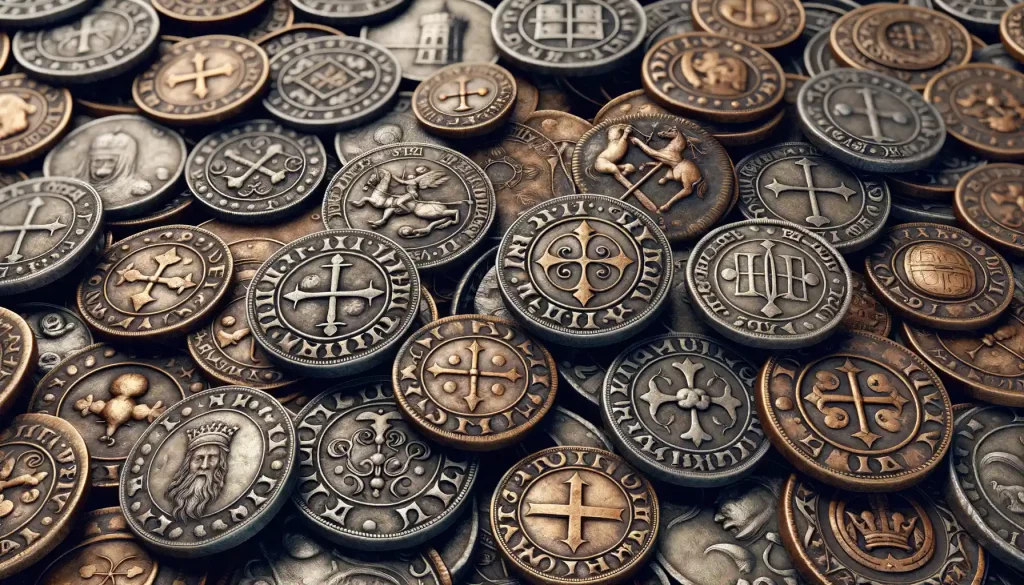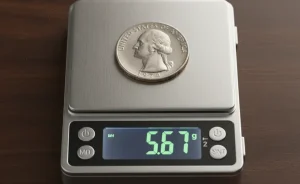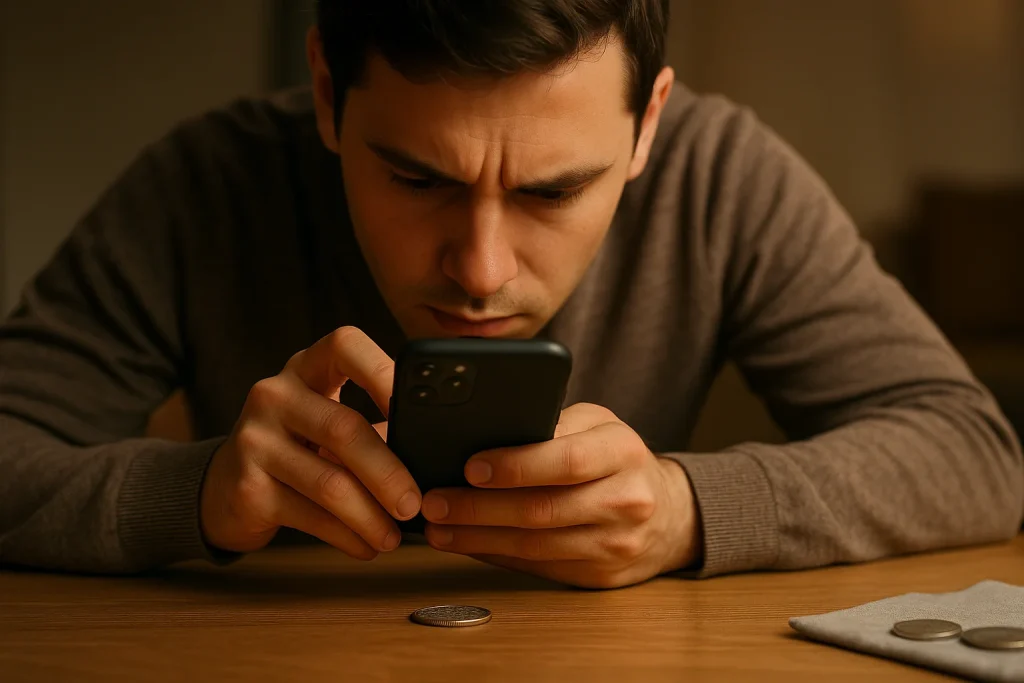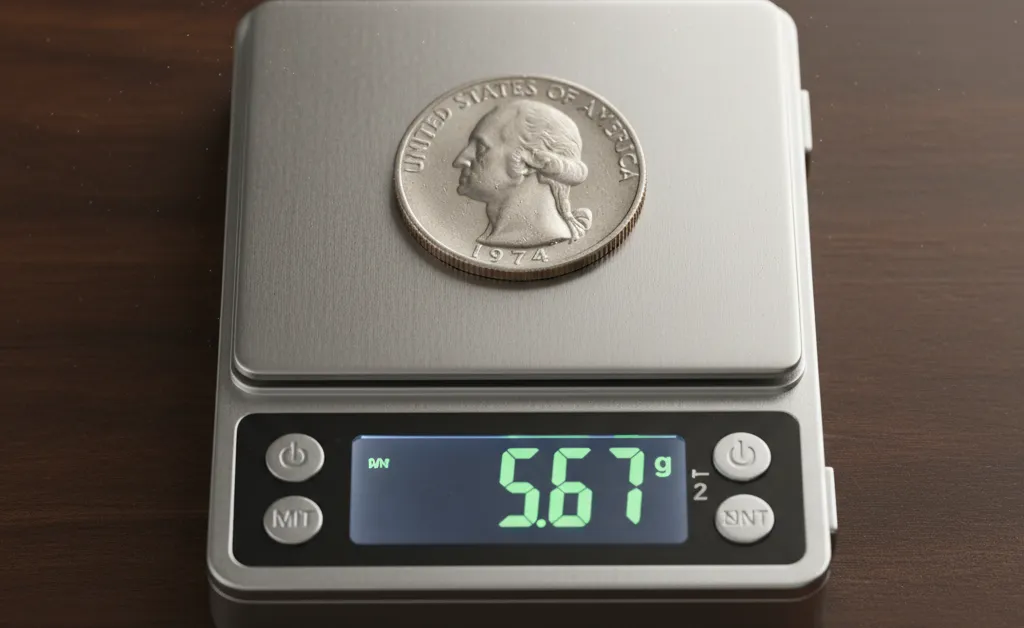Origins and Development of Medieval Coinage
The Spark That Ignited Medieval Coinage
Picture this: the bustling trade markets of medieval Europe, alive with the clinking sound of coins being exchanged. The story of medieval coinage begins here, in the soul of a growing economy. As kingdoms expanded their territories, they needed a reliable way to facilitate trade and display power. Thus, coinage became not just currency but a bold statement of sovereignty.
Early medieval coins were often crude, stamped with rough designs that reflected the tools and skills of the time. Yet, these humble beginnings laid the groundwork for the intricate and artistic coins that would follow. Think of Charlemagne’s era, where coins shifted to reflect centralized authority, moving Europe beyond fragmented systems of barter. Feudal lords soon imprinted their own symbols and mottos, an early attempt at branding!
- Gold coins, such as Byzantine *solidus*, inspired by the Roman Empire.
- Silver pennies, or *deniers*, dominated Western Europe.
- Barter didn’t vanish; it coexisted alongside coins in rural areas.
Ultimately, medieval coins weren’t just money—they told stories. Each mint mark whispered tales of alliances, battles, and ambition. How fascinating is that?
Key Features of Medieval Coins
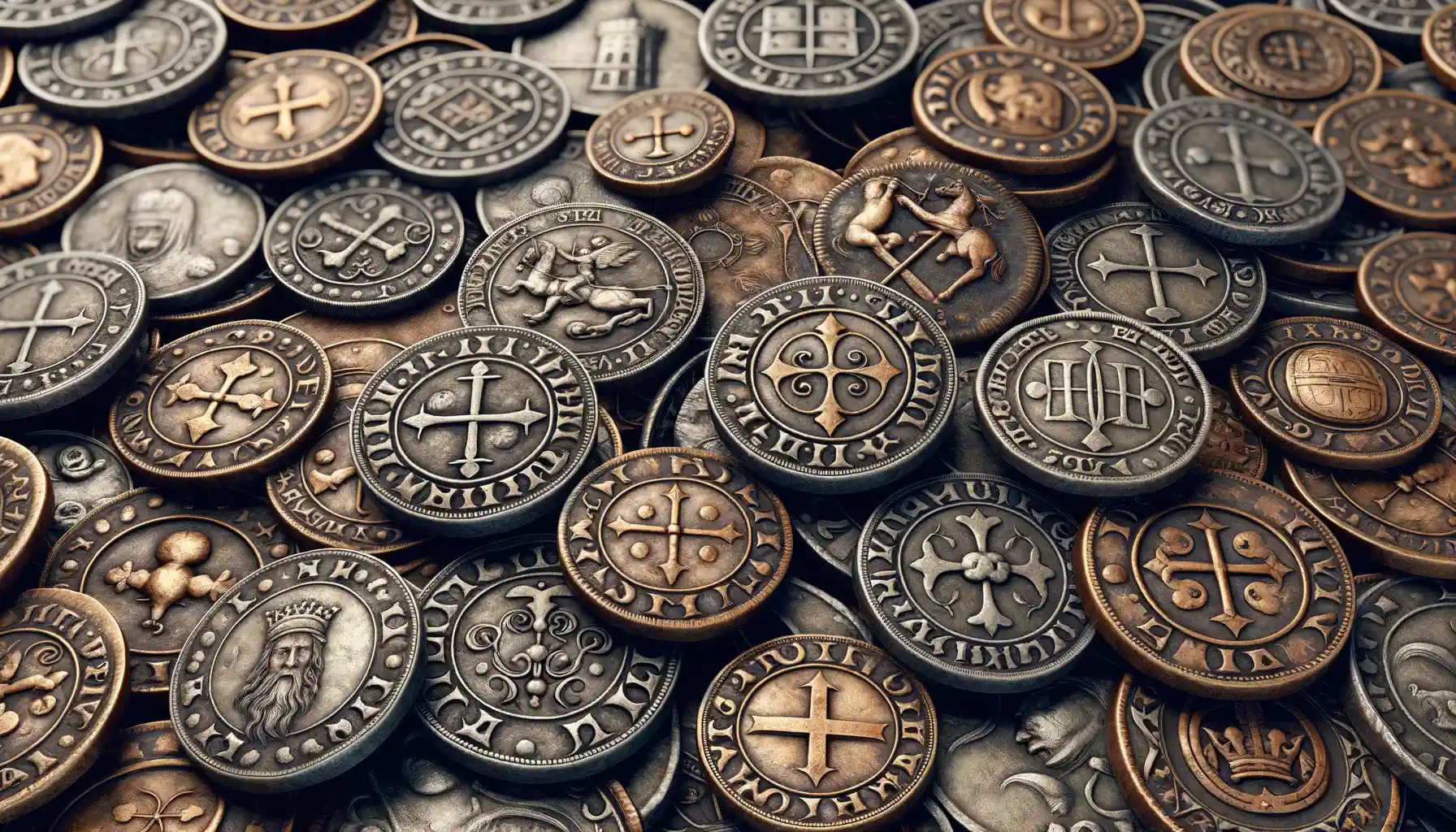
The Intricate Artistry of Medieval Coins
Step into the medieval world, and you’ll see that coins were more than just currency—they were miniature works of art. Each design was a tangible reflection of power, culture, and craftsmanship. Picture a gleaming silver penny, smaller than today’s coins but brimming with detail: from the solemn face of a ruler to intricate patterns that seemed almost magical.
The level of precision is astonishing when you consider the tools they used—hand-carved dies and hammers! It’s no wonder each coin feels unique, as slight imperfections tell stories of the hands that forged them. Symbols were everywhere. Crowns, swords, or religious motifs like the cross weren’t just decoration; they were powerful messages sent to anyone who held the coin.
- Portraits of Rulers: Capturing the ruler’s face on coins wasn’t just vanity—it was a political statement! Who better to remind people of your reign than an ever-circulating coin?
- Mint Marks and Inscriptions: These cryptic little details indicated where and when a coin was minted, adding layers of hidden history for modern-day treasure hunters.
Shapes, Sizes, and Materials That Dazzle
Forget uniformity! Medieval coins came in all shapes and sizes, ranging from small, wafer-thin pieces to chunky, weighty treasures. Gold, silver, copper, and even alloys reflected both the region’s resources and its economic status. Sometimes, coins were clipped at the edges—a cheeky medieval trick to pocket extra precious metal.
Hold one of these coins, and you’re holding a silent witness to medieval trade routes, shifting borders, and royal ambitions. Each coin buzzes with life, humming tales of bustling markets, treacherous sea voyages, and royal coffers filled—or emptied—by ambition.
Economic and Political Influence on Coin Production
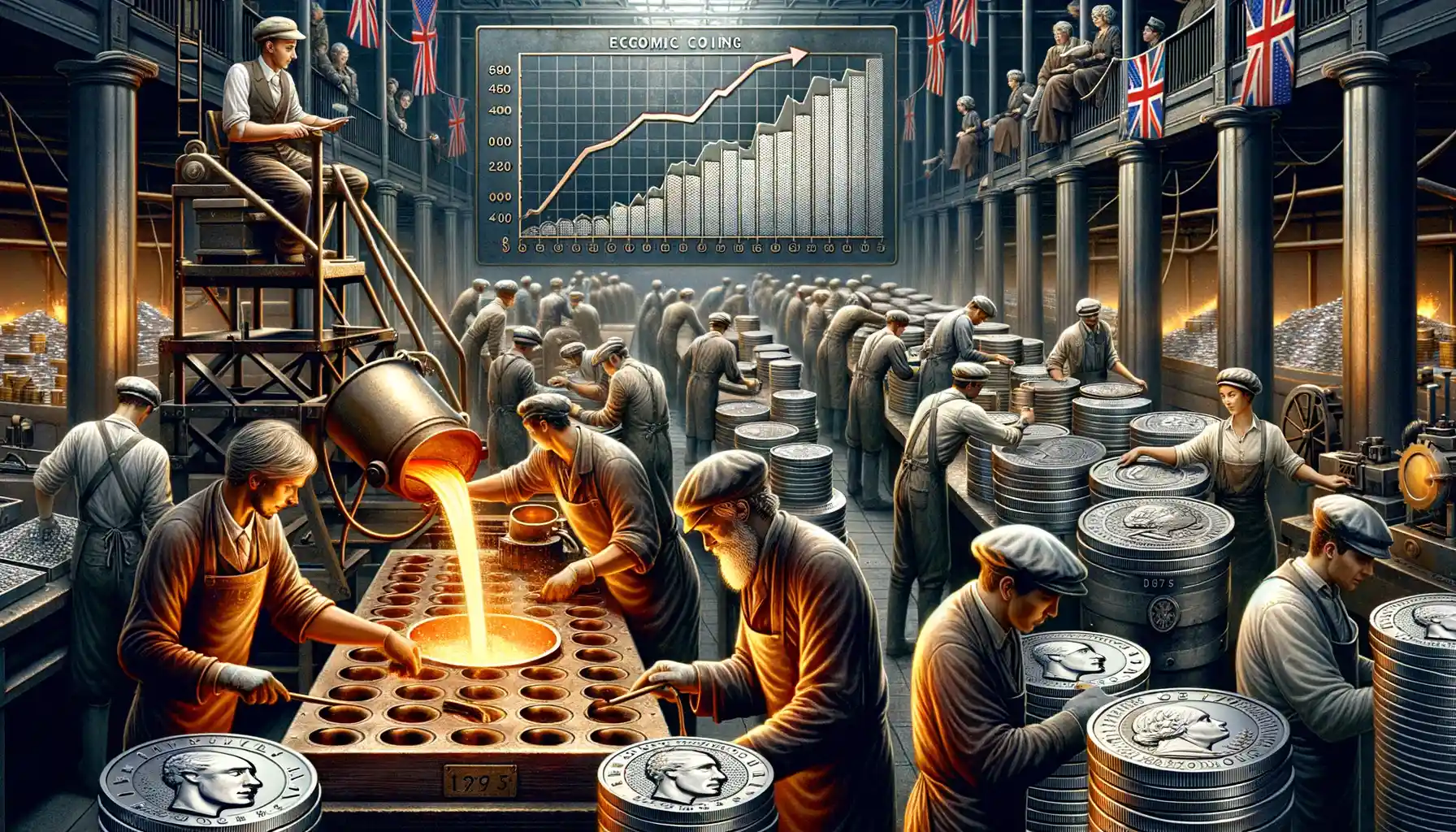
The Tug-of-War Between Power and Wealth
The production of medieval coins was anything but straightforward. It was a delicate dance between political ambition and economic necessity, often dictated by whoever held the reins of power. Imagine this: a king fresh off a military victory wants to mint new coins bearing his royal symbol, a tangible proclamation of his dominance. But here’s the twist—he might not even have enough silver or gold to make it happen.
This dynamic was further complicated by rulers who saw coinage as a tool for control. By adjusting the mix of precious metals in coins (a practice known as debasement), they could stretch their wealth when funds were tight. But tampering with the value of currency came at a cost: public trust. An angry merchant spotting a lighter coin might refuse to trade, sparking ripples of uncertainty throughout the kingdom.
- Wars drained treasuries, forcing rulers to melt down older coins or loot neighboring regions for resources.
- Fluctuations in the availability of metals influenced who could afford to mint coins at all.
- Trade booms drove innovation in coin design but also created counterfeit headaches for law enforcement.
When Politics Shaped the Mint
Coin production wasn’t just about money—it was about power. Think of Charlemagne, who unified vast territories under an empire-wide currency system to solidify control. Or city-states like Venice, whose coins weren’t just currency but symbols of independence in a fragmented Europe.
Even church authorities entered the game—religious leaders controlled mints in certain regions, their coins adorned with sacred imagery, infusing divine authority into the clinking metal. The political messages behind those coins often spoke louder than words ever could.
And then there’s the human element to consider. Picture the workers in the mints, hammering away, sweating under the watchful gaze of demanding officials. Their labor shaped not just currency but history itself—one heated coin at a time.
Major Regions and Their Unique Coinage
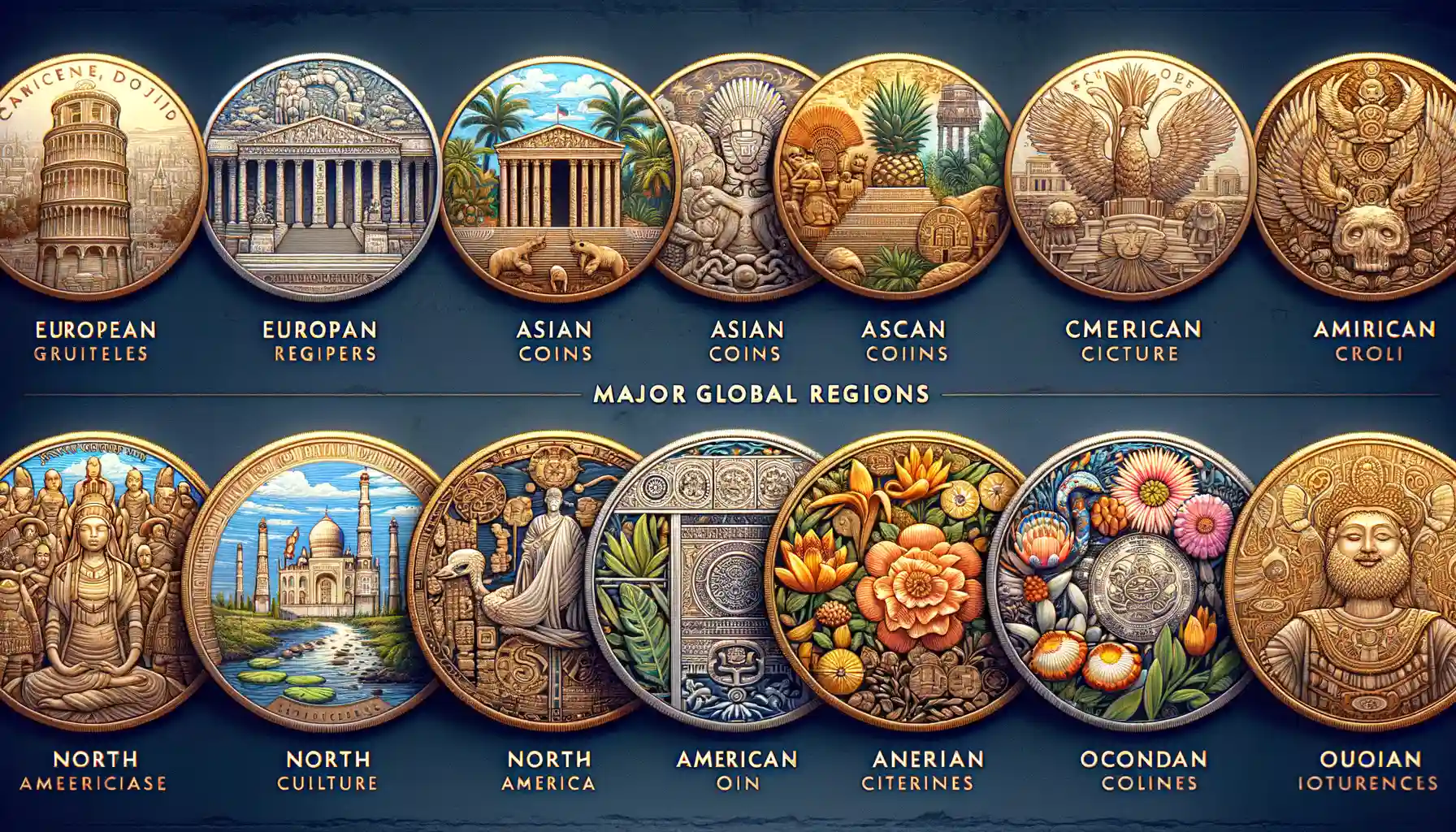
Coins of the West: Charm and Craftsmanship in Europe
Medieval Europe was a patchwork quilt of kingdoms, each minting coins as unique as their banners. Picture yourself holding a glimmering Florin from Florence, its intricate lily design practically whispering tales of trade and splendor. Or imagine a hefty English penny, the standard-bearer of the Anglo-Saxon economy, stamped with the crisp profile of a reigning king—sometimes so lifelike it almost feels like he’s looking back at you.
In France, Charlemagne’s deniers laid the foundation for modern European coinage, while the Germans introduced strikingly detailed pieces from the Holy Roman Empire. And who could forget the elegance of Spain’s Almohad dinars, their golden inscriptions reflecting the sophisticated blend of Islamic art and Iberian power?
- Florence’s Florins: Symbols of wealth in the heart of Renaissance trade.
- English Pennies: A coin so steadfast it lasted centuries!
- Almohad Dinars: A testament to cultural fusion and precision artistry.
The Eastern Edge: Coinage Beyond Byzantium
Let’s journey east, where coins transformed into miniature works of art. The Byzantine solidus, a shimmering gold disc, stood as the international currency of empires. Now imagine merchants in bustling bazaars of the Silk Road inspecting Tang Dynasty cash coins, their square holes making them as practical as they were iconic.
Even further afield, the Islamic Caliphates minted coins like the mesmerizing Abbasid dirham, blending calligraphy and geometry into perfection. These coins didn’t just represent value—they embodied belief systems, cultures, and historic crossroads. They were ambassadors in your pocket, carrying stories of emperors, sultans, and scholars across continents.
Legacy and Impact of Medieval Coinage on Modern Currencies
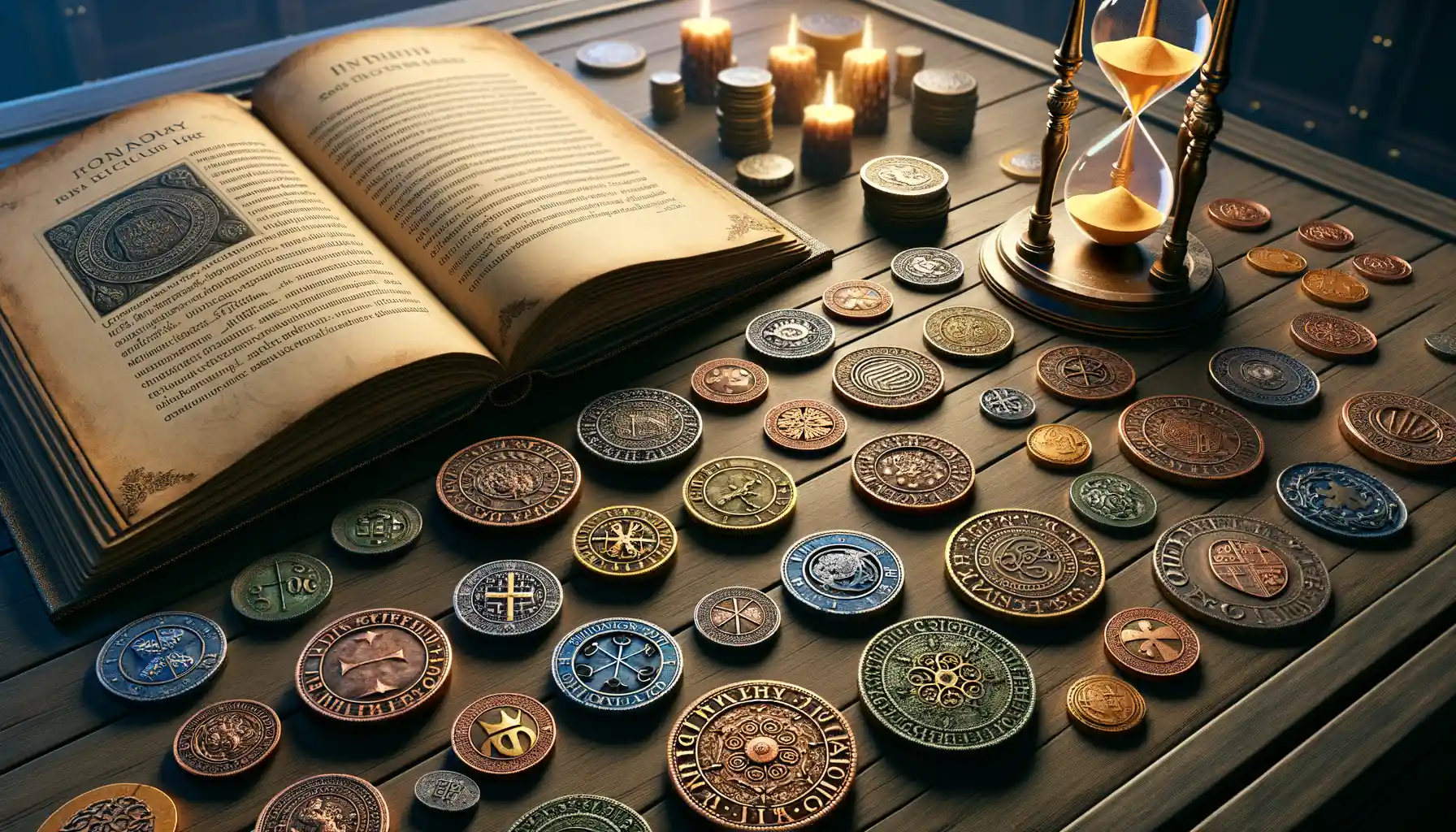
How Medieval Coins Shaped the DNA of Modern Currencies
The jangling coins of the Middle Ages were more than just tools for trade—they were storytellers, carrying the weight of culture, politics, and innovation in their designs. Fast forward to today’s sleek, uniform currencies, and you’ll discover that the influence of medieval coinage is still woven into their very fabric.
Take the concept of standardization. Medieval rulers like Charlemagne set the precedent by unifying weights and measures in coin production, creating trust in the currency’s value across vast regions. Sound familiar? This was the seed that blossomed into modern centralized banking systems. Without medieval experiments in consistency, we might still be bartering chickens and sacks of grain!
And let’s not forget coin aesthetics. The intricate designs on medieval pennies and groats—royal profiles, crests, and religious symbols—laid the groundwork for today’s embossed currency art. Some modern coins even nod directly to their ancestors. The British pound, for example, echoes centuries-old heraldic motifs.
- The Euro: a union like the ancient Holy Roman Empire, reflecting shared yet diverse identities.
- Cryptocurrencies: a digital evolution, yet reminiscent of medieval trade tokens in their experimental nature.
The past isn’t just a prologue; it’s a blueprint, etched in gold, silver, and copper.

